#ozone depleting substances
Text
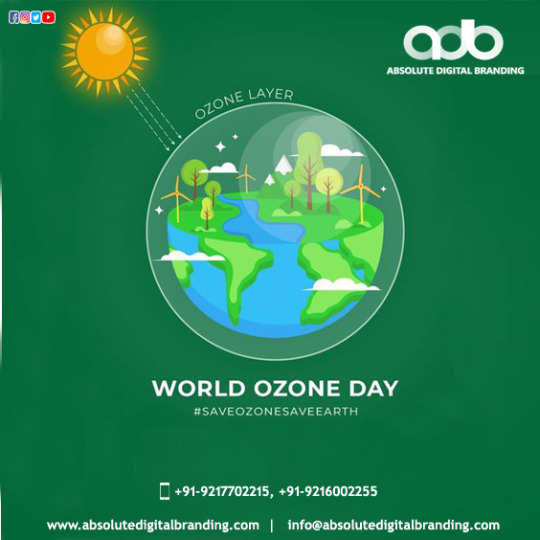
International Day for the Preservation of the Ozone Layer is celebrated on September 16 designed by the United Nations General Assembly. This designation had been made on December 19, 2000, in commemoration of the date, in 1987, on which nations signed the Montreal Protocol on Substances that Deplete the Ozone Layer.
#ozone #ozoneday #Marktingstrategy #SEObrandingagency #SEO #PPC #SMO #SMM #SeoCompany #digitalmarketingcompany #socialmediamarketingcompany #absolutedigitalbranding #searchengineoptimization #advertisingagencyinmohali #facebook #twitter #marketingonline #internetmarketing #follow #digitalagency #marketingagency #motivation #digitalmarketingtips #onlinebusiness #websitedesign #marketingonline #brand #ABSOLUTEDIGITALBRANDING #BEST #PUBLIC #RELATION #AGENCY #IN #CHANDIGARH #MOHALI #PUNJAB #NORTH #INDIA #onlinebranding #branding360degree #SEObrandingagency #websiteranking #websitetrafic #Digitalmarketing #OnlineAdvertising #instagrammarketing #web #technology #marketingonline #content #instagrammarketing #advertisingagency #web #buildingrelationships #globally #customer #internetbranding-at Absolute digital Branding & Public relations.
#International Day for the Preservation of the Ozone Layer is celebrated on September 16 designed by the United Nations General Assembly. Thi#2000#in commemoration of the date#in 1987#on which nations signed the Montreal Protocol on Substances that Deplete the Ozone Layer.#ozone#ozoneday#Marktingstrategy#SEObrandingagency#SEO#PPC#SMO#SMM#SeoCompany#digitalmarketingcompany#socialmediamarketingcompany#absolutedigitalbranding#searchengineoptimization#advertisingagencyinmohali#facebook#twitter#marketingonline#internetmarketing#follow#digitalagency#marketingagency#motivation#digitalmarketingtips#onlinebusiness#websitedesign
2 notes
·
View notes
Text

International Day for the Preservation of the Ozone Layer is celebrated on September 16 designed by the United Nations General Assembly. MEDIAHEIGHTSPRCOM#best#public#relation#agency#in#chandigarh#mohali#punjab#north#india#buildingrelationships#globally#customer#internetbanding — at media heights #smo#branding#facebook#twitter#marketingonline #brand #searchengineoptimization #internetmarketing #follow #digitalagency #marketingagency #motivation #digitalmarketingtips #onlinebusiness #websitedesign #marketingonline #brand #searchengineoptimization #content #instagrammarketing #advertisingagency #web #technology #onlinebranding #branding360degree #SEO #SEObrandingagency #websiteranking #websitetrafic #Digitalmarketing #mediaheights #OnlineAdvertising #instagrammarketing #advertisingagency #web #marketingonline #brand
#in commemoration of the date#in 1987#on which nations signed the Montreal Protocol on Substances that Deplete the Ozone Layer.#ozone#WorldOzoneDay#digitalmarketingtips#MEDIAHEIGHTS#digitalmarketingcompany#searchengineoptimization#content#instagrammarketing#advertisingagency#web#MEDIAHEIGHTSPRCOM#best#public#relation#agency#in#chandigarh#mohali#punjab#north#india#buildingrelationships#globally#customer#internetbanding — at media heights#smo#branding
1 note
·
View note
Text
Steve DeCanio, an ex-Berkeley activist now doing graduate work at M.I.T., is a good example of a legion of young radicals who know they have lost their influence but have no clear idea how to get it back again. “The alliance between hippies and political radicals is bound to break up,” he said in a recent letter. “There’s just too big a jump from the slogan of ‘Flower Power’ to the deadly realm of politics. Something has to give, and drugs are too ready-made as opiates of the people for the bastards (the police) to fail to take advantage of it.”
Decanio spent three months in various Bay Area jails as a result of his civil rights activities and now he is lying low for a while, waiting for an opening. “I’m spending an amazing amount of time studying,” he wrote. “It’s mainly because I’m scared; three months on the bottom of humanity’s trash heap got to me worse than it’s healthy to admit. The country is going to hell, the left is going to pot, but not me. I still want to figure out a way to win.”
Re-reading Hunter S. Thompson's 1967 article about Haight-Ashbury, I thought: "huh, this guy sounds like he's going places. I wonder whether he ever did 'figure out a way to win'?"
So I web searched his name, and ... huh!
My current research interests include Artificial Intelligence, philosophy of the social sciences, and the economics of climate change.
Several years ago I examined the consequences of computational limits for economics and social theory in Limits of Economic and Social Knowledge (Palgrave Macmillan, 2013). Over the course of my academic career I have worked in the fields of global environmental protection, the theory of the firm, and economic history. I have written about both the contributions and misuse of economics for long-run policy issues such as climate change and stratospheric ozone layer protection. An earlier book, Economic Models of Climate Change: A Critique (Palgrave Macmillan, 2003), discussed the problems with conventional general equilibrium models applied to climate policy.
From 1986 to 1987 I served as Senior Staff Economist at the President’s Council of Economic Advisers. I have been a member of the United Nations Environment Programme’s Economic Options Panel, which reviewed the economic aspects of the Montreal Protocol on Substances that Deplete the Ozone Layer, and I served as Co-Chair of the Montreal Protocol’s Agricultural Economics Task Force of the Technical and Economics Assessment Panel. I participated in the Intergovernmental Panel on Climate Change that shared the 2007 Nobel Peace Prize, and was a recipient of the Leontief Prize for Advancing the Frontiers of Economic Thought in 2007. In 1996 I was honored with a Stratospheric Ozone Protection Award, and in 2007 a “Best of the Best” Stratospheric Ozone Protection Award from the U.S. Environmental Protection Agency. I served as Director of the UCSB Washington Program from 2004 to 2009.
I don't know whether this successful academic career would count as "winning" by his own 1967 standards. But it was a pleasant surprise to find anything noteworthy about the guy at all, given that he was quoted as a non-public figure in a >50-year-old article.
80 notes
·
View notes
Text
The 1987 Montreal Protocol, which phased out the production and use of chemicals that were depleting the ozone layer, has long been considered one of the most successful environmental treaties in history. New research finds that the global pact achieved another unforeseen benefit: delaying the melting of Arctic sea ice.
In a study published Monday in the Proceedings of the National Academy of Sciences, researchers from the University of Exeter and Columbia University found that the implementation of the Montreal Protocol is delaying the first ice-free Arctic summer by up to 15 years. That’s because the chemicals banned under the agreement are also potent greenhouse gases.
“Our results show that the climate benefits from the Montreal Protocol are not in some faraway future: the protocol is delaying the melting of Arctic sea ice at this very moment,” Lorenzo Polvani, one of the study’s authors, said in a press release.
The study authors ran a series of climate models based on two different scenarios: one that included levels of ozone-depleting substances that would be expected if the Montreal Protocol never existed, and another accounting for the global treaty. The researchers concluded that the protocol is postponing the first ice-free Arctic summer by a decade or more, and entirely due to the phasedown of ozone-depleting chemicals.
The Montreal Protocol was created to address a hole in the stratospheric ozone layer over the Antarctic. The ozone layer protects the Earth from harmful ultraviolet radiation that causes skin cancer and cataracts in humans. The treaty phased out almost 100 chemicals — including aerosols used in hair spray and other products, refrigerants, and solvents — that were found to be responsible for destroying stratospheric ozone.
Those banned chemicals, collectively called ozone-depleting substances, or ODS, are also potent greenhouse gases, with up to tens of thousands times the global warming potential of carbon dioxide. The report authors estimate that 1 metric ton of avoided ODS emissions leads to 7,000 square meters (more than 75,000 square feet) of avoided Arctic sea loss. By way of comparison, 1 metric ton of carbon dioxide emissions results in about 3 square meters (about 32 square feet) of sea ice loss.
Given the potency of ODSs as a greenhouse gas, the authors are not surprised at this outsize impact on Arctic sea ice levels. “Nonetheless, such a large mitigating impact of the Montreal Protocol on Arctic sea ice loss is remarkable if one keeps in mind that the protocol was aimed at preventing ozone depletion in the Antarctic stratosphere, and little was known of its effect on Arctic sea ice when the protocol was signed,” the authors noted.
According to their projections, the Montreal Protocol has already prevented more than half a million square kilometers (about 193,000 square miles) of sea ice loss. By 2030, that amount will rise to more than 1 million square kilometers, and to 2 million square kilometers of prevented Arctic sea ice loss by 2040.
-via Grist, 5/24/23
#arctic#arctic circle#arctic ocean#arctic ice#sea ice#climate change#global warming#sea level rise#montreal protocol#cfc#hfc#greenhouse gasses#carbon dioxide#if we hurry#we can absolutely buy ourselves the time to save ourselves#as someone constantly looking at good news developments in the environment and green tech I truly believe that#good news#hope
418 notes
·
View notes
Text
1. Girl with incurable cancer recovers after pioneering treatment

A girl’s incurable cancer has been cleared from her body after what scientists have described as the most sophisticated cell engineering to date. Alyssa, whose family do not wish to give their surname, was diagnosed with T-cell acute lymphoblastic leukaemia in May 2021.
Scientists at Great Ormond Street Hospital for Children in London gave her pre-manufactured cells edited using new technology to allow them to hunt down and destroy cancerous T-cells without attacking each other. Less than a month after being given the treatment, she was in remission, and was able to have a second bone marrow transplant.
Can I get a fuck cancer?
2. The UK has made gigabit internet a legal requirement for new homes
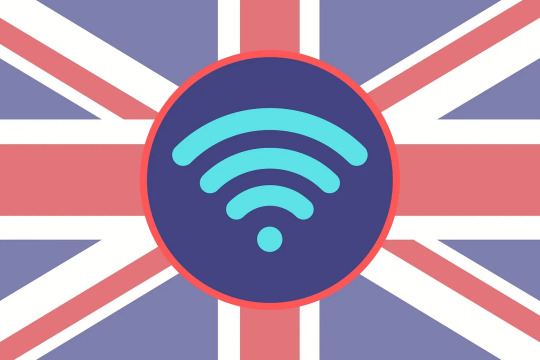
Updated regulations require new properties to be built with gigabit broadband connections and make it easier to install into existing blocks of flats across the UK. Connection costs will be capped at £2,000 per home, and developers must still install gigabit-ready infrastructure (including ducts, chambers, and termination points) and the fastest-available connection if they’re unable to secure a gigabit connection within the cost cap
3. US cancer death rate falls 33% since 1991

The rate of people dying from cancer in the United States has continuously declined over the past three decades, according to a new report from the American Cancer Society.
The US cancer death rate has fallen 33% since 1991, which corresponds to an estimated 3.8 million deaths averted, according to the report, published Thursday in CA: A Cancer Journal for Clinicians. Partly due to advances in treatment, early detection and less smoking, report says
. . .
Thank you for following. You can support this newsletter for less than a price of a cup of coffee:
Support with a coffee ❤️
Let’s continue with the good news…
. . .
4. Lab-grown retinal eye cells make successful connections, open door for clinical trials to treat blindness
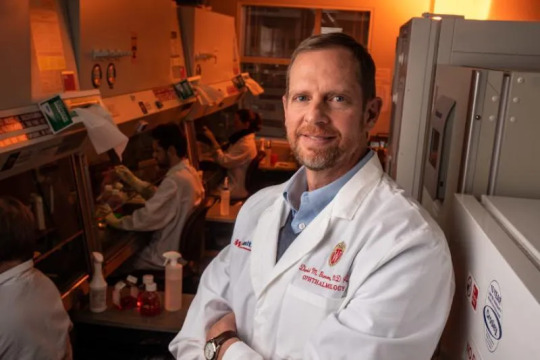
Retinal cells grown from stem cells can reach out and connect with neighbors, according to a new study, completing a “handshake” that may show the cells are ready for trials in humans with degenerative eye disorders.
Over a decade ago, researchers from the University of Wisconsin–Madison developed a way to grow organized clusters of cells, called organoids, that resemble the retina, the light-sensitive tissue at the back of the eye. They coaxed human skin cells reprogrammed to act as stem cells to develop into layers of several types of retinal cells that sense light and ultimately transmit what we see to the brain.
5. The ozone layer is on track to recover in the next 40 years, the United Nations says

The Earth's ozone layer is on its way to recovering, thanks to decades of work to get rid of ozone-damaging chemicals, a panel of international experts backed by the United Nations has found.
The ozone layer serves an important function for living things on Earth. This shield in the stratosphere protects humans and the environment from harmful levels of the sun's ultraviolet radiation. In the latest report on the progress of the Montreal Protocol, the U.N.-backed panel confirmed that nearly 99% of banned ozone-depleting substances have been phased out.
6. Uganda declares an end to Ebola outbreak
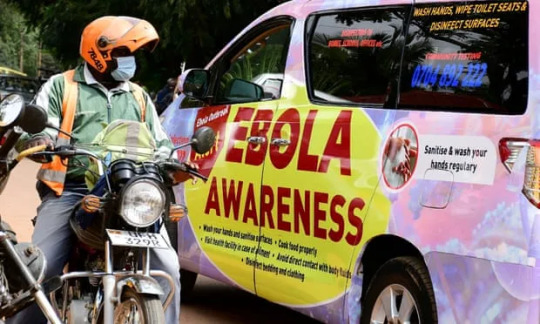
The Ugandan government has declared an end to its Ebola outbreak, less than four months after cases were first reported. Since 20 September, 56 people have died from the virus, which is spread through body fluids, and there have been 142 confirmed infections.
The country has reported no new infections in more than 42 days – twice the maximum incubation period of the virus, a World Health Organization benchmark for a country to be declared Ebola-free.
7. Doggy ‘daycare’ bus in Alaska goes viral on TikTok
Check them out here:
- - -
That's it for this week. If you liked this post you can support this newsletter with a small kofi donation:
Buy me a coffee ❤️
Subscribe for more weekly wholesome news...
468 notes
·
View notes
Text
Excerpt from this story from EcoWatch:
An international team of scientists say efforts to protect the ozone layer have been a “huge global success,” with damaging atmospheric gases declining more quickly than expected.
According to the new study, the total amount of chlorine — which depletes the ozone — in all hydrochlorofluorocarbons (HCFCs) peaked in 2021, five years earlier than the most recent predictions.
“This has been a huge global success. We’re seeing that things are going in the right direction,” said Dr. Luke Western, lead author of the study and a Marie Curie Research Fellow at University of Bristol’s School of Chemistry, as The Guardian reported.
The reduction in HCFCs is largely due to the 1987 Montreal Protocol, which introduced controls on the usage and production of ozone-depleting substances. HCFCs were once common in the manufacturing of hundreds of products, from refrigerators and packaging to aerosol sprays and foams.
Lowering the amount of HCFCs — which are also greenhouse gases — should help lessen global heating, a press release from University of Bristol said.
Developed to replace chlorofluorocarbons — banned globally since 2010 — production and usage of HCFCs is still in the process of being phased out.
“The results are very encouraging. They underscore the great importance of establishing and sticking to international protocols,” Western said in the press release. “Without the Montreal Protocol, this success would not have been possible, so it’s a resounding endorsement of multilateral commitments to combat stratospheric ozone depletion, with additional benefits in tackling human-induced climate change.”
HCFC emissions fell less than one percent between 2021 and 2023, but are still moving in the right direction.
“Their production is currently being phased out globally, with a completion date slated for 2040. In turn these HCFCs are being replaced by non-ozone depleting hydrofluorocarbons (HFCs) and other compounds. By enforcing strict controls and promoting the adoption of ozone-friendly alternatives, the protocol has successfully curbed the release and levels of HCFCs into the atmosphere,” Western said.
37 notes
·
View notes
Text
Badly summarized WIP poll
Thanks @hippiewrites for the open tag I want to do this and @blind-the-winds for creating this game!
Now I have two main WIPs but I have many I haven't touched in years. Or are nothing more than a basic concept with no substance. I'm including them anyway for more options.
I have more than this but I couldn't think of a fun way to describe them.
Alright so @gracehosborn @theelfauthor @buffythevampirelover @little-mouse-gardens @finxi-writes @ohnomybreadsticks @isabellebissonrouthier @thepeculiarbird @queerfox-tales @chauceryfairytales @emberlyric @emabatis y'all can do stuff unless you've already done this it's hard to keep track
Or if you haven't done this yet you can do that too and tag me for an open tag
#writing blog#writers on tumblr#writer things#writing community#writing on tumblr#writers of tumblr#writing poll#badly described wip#wip described badly#wip tag#poll tag#wip poll#writeblr community#writeblr#writing#writers#writer#write#wip meme#wip#my wips
39 notes
·
View notes
Link
Earth's protective ozone layer is slowly but noticeably healing at a pace that would fully mend the hole over Antarctica in about 43 years, a new United Nations report says.
A once-every-four-years scientific assessment found recovery in progress, more than 35 years after every nation in the world agreed to stop producing chemicals that chomp on the layer of ozone in Earth's atmosphere that shields the planet from harmful radiation linked to skin cancer, cataracts and crop damage.
"In the upper stratosphere and in the ozone hole we see things getting better," said Paul Newman, co-chair of the scientific assessment.
The progress is slow, according to the report presented Monday at the American Meteorological Society convention in Denver. The global average amount of ozone 18 miles (30 kilometers) high in the atmosphere won't be back to 1980 pre-thinning levels until about 2040, the report said. And it won't be back to normal in the Arctic until 2045.
Continue Reading
177 notes
·
View notes
Text
Plugging that boy's hole like I'm the Montreal Protocol on Substances that Deplete the Ozone Layer
15 notes
·
View notes
Text
headcanon 3 (quill)
here’s the deal
I genuinely cannot think of MCU Peter Quill without being like “this man is the most innocent Terran (at least from the US but - possibly everywhere?) left in the galaxy”
like he doesn’t know about social media, the trump presidency, student loans, school shootings, anti-vaxxers, anti-maskers, american imperialism, medical debt, or incels
if you told MCU Peter Quill “oh yeah nazis are back” he’d be like “ah yes, terrans must've cracked the code on time travel since i've been gone”
he thinks "the climate crisis" refers to the amount of ozone-depleting substances in the atmosphere and he's like "didn't we fix that in '86?"
he thinks that if he’d stayed on earth he’d have a house in the burbs with a white picket fence and you have to be like “no bby I’m so sorry the housing market tho”
of course he's seen some shit, he gets depressed from time to time, has experienced tragedy and loss, etc (not me writing an essay about how that report card in his backpack damns every teacher he had in the year his mother was dying and has become a cornerstone of how he views himself) but like ultimately, he is still SO hopeful, SO optimistic. he would be incapable of understanding y/n's constant repetition of "my retirement plan is walking into the ocean"
and yes I do plan to lean into this in every fucking fanfic I write that he happens to be mentioned in
#there were only three star wars movies when he got scooped#peter quill would not love chris pratt just sayin#cinnamon roll starlord#cinnamon roll peter quill#protect this man at all costs#raccoonfallsharder headcanons#guardians of the galaxy#gotg fanfiction#star lord#just fanfiction things#peter quill#cinnamon roll#gotg headcanons#headcanon accepted#rocket raccoon headcanon#rfh headcanons
43 notes
·
View notes
Text
International efforts to protect the ozone layer have been a “huge global success”, scientists have said, after revealing that damaging gases in the atmosphere were declining faster than expected.
The Montreal protocol, signed in 1987, aimed to phase out ozone-depleting substances found primarily in refrigeration, air conditioning and aerosol sprays.
A study has found that atmospheric levels of hydrochlorofluorocarbons (HCFCs), harmful gases responsible for holes in the ozone layer, peaked in 2021 – five years ahead of projections.
8 notes
·
View notes
Photo

The Earth's ozone layer is on its way to recovering, thanks to decades of work to get rid of ozone-damaging chemicals, a panel of international experts backed by the United Nations has found. The ozone layer serves an important function for living things on Earth. This shield in the stratosphere protects humans and the environment from harmful levels of the sun's ultraviolet radiation.
Following alarm over the loss of ozone in the 1980s, the ozone layer has been steadily improving in the wake of the 1989 Montreal protocol, an international agreement that has helped eliminate 99% of ozone-depleting chemicals, such as chlorofluorocarbons (CFCs) that were used as solvents and refrigerants. The UN said the action taken on the ozone layer had also bolstered the more ponderous response to the climate crisis.
In the latest report on the progress of the Montreal Protocol, the U.N.-backed panel confirmed that nearly 99% of banned ozone-depleting substances have been phased out. If current policies stay in place, the ozone layer is expected to recover to 1980 values by 2040, the U.N. announced. Source: NPR (link in bio)
#climatechange #action #progress #goodnews https://www.instagram.com/p/Cnjysslr0-2/?igshid=NGJjMDIxMWI=
60 notes
·
View notes
Text
Navigating the Ozone Layer Depletion Crisis
The ozone layer, a fragile shield of gas enveloping the Earth, plays a critical role in safeguarding life on our planet. However, since the mid-20th century, human activities have triggered a cascade of events leading to its depletion. The ozone layer, primarily located in the stratosphere, absorbs the majority of the sun's harmful ultraviolet (UV) radiation, shielding the Earth's surface from its detrimental effects. Ozone molecules (O3) undergo a continuous process of creation and destruction, with ultraviolet radiation breaking apart oxygen molecules (O2) to form ozone. This delicate balance maintains the ozone layer's integrity, ensuring that harmful UV radiation remains at bay.
The onset of industrialization heralded the era of ozone-depleting substances (ODS), synthetic compounds containing chlorine and bromine that catalyze the breakdown of ozone molecules. Chlorofluorocarbons (CFCs), once widely used in refrigerants, solvents, and aerosol propellants, emerged as the primary culprits behind ozone depletion. When released into the atmosphere, these ODS molecules migrate to the stratosphere, where they undergo photodissociation, liberating chlorine atoms that catalytically destroy ozone molecules.
The depletion of the ozone layer poses grave consequences for ecosystems, biodiversity, and human health. Increased exposure to UV radiation threatens marine ecosystems, hindering the growth and development of phytoplankton, the foundation of the marine food web. Terrestrial ecosystems, including forests and agricultural crops, face heightened risks of damage and disruption, with implications for global food security and biodiversity loss. Human health is also at stake, as heightened UV radiation levels amplify the incidence of skin cancers, cataracts, and compromised immune function. Vulnerable populations, such as children, the elderly, and outdoor workers, face heightened risks of UV-related health ailments, necessitating proactive measures to minimize exposure and mitigate health risks.
Recognizing the urgent need to address ozone layer depletion, the international community rallied behind the Montreal Protocol on Substances that Deplete the Ozone Layer, a landmark treaty adopted in 1987. The Montreal Protocol mandated the phasedown and eventual phaseout of ozone-depleting substances, spurring innovation in ozone-friendly alternatives and technologies. Through concerted global cooperation and scientific research, significant progress has been made in mitigating ozone depletion. The phaseout of CFCs and other ozone-depleting substances has led to gradual recovery of the ozone layer, with projections indicating a return to pre-1980 levels by mid-century. However, persistent challenges remain, including the emergence of new ozone-depleting substances and the complex interplay of climate change and ozone depletion.
Addressing ozone layer depletion demands sustained commitment and collaboration across national borders and sectors. Efforts to accelerate the phaseout of ozone-depleting substances must be coupled with initiatives to enhance monitoring, research, and public awareness. Investing in ozone-friendly technologies, renewable energy sources, and sustainable practices can bolster resilience to ozone depletion while advancing broader environmental and societal goals. Education and outreach play a pivotal role in fostering a culture of environmental stewardship and responsible consumption. By raising awareness about the impacts of ozone depletion and empowering individuals to take action, we can catalyze collective efforts to protect the ozone layer and safeguard the health and well-being of present and future generations.
In conclusion, ozone layer depletion represents a complex and multifaceted challenge with far-reaching implications for the environment, biodiversity, and human health. By leveraging scientific knowledge, policy interventions, and global cooperation, we can chart a course towards ozone resilience, ensuring that the protective shield of the ozone layer endures as a beacon of hope for generations to come.
2 notes
·
View notes
Text
Susan Solomon wins VinFuture Award for Female Innovators
New Post has been published on https://thedigitalinsider.com/susan-solomon-wins-vinfuture-award-for-female-innovators/
Susan Solomon wins VinFuture Award for Female Innovators
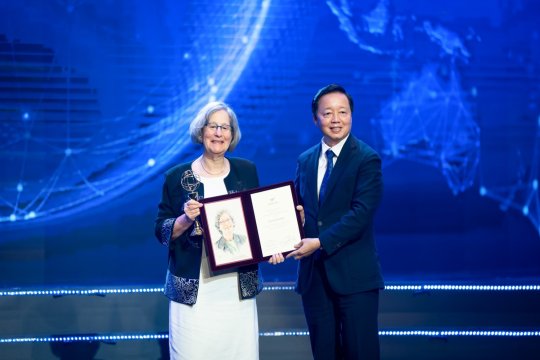

Lee and Geraldine Martin Professor of Environmental Studies Susan Solomon has been awarded the 2023 VinFuture Award for Female Innovators. Solomon was picked out of almost 1,400 international nominations across four categories for “The discovery of the ozone depletion mechanism in Antarctica, contributing to the establishment of the Montreal Protocol.” The award, which comes with a $500,000 prize, highlights outstanding female researchers and innovators that can serve as role models for aspiring scientists.
“I’m tremendously humbled by that, and I’ll do my best to live up to it,” says Solomon, who attended the ceremony in Hanoi, Vietnam, on Dec. 20.
The VinFuture Awards are given annually to “honor scientific research and breakthrough technological innovations that can make a significant difference” according to their site. In addition to Female Innovators, the award has two other special categories, Innovators from Developing Countries and Innovators with Outstanding Achievements in Emerging Fields, as well as their overall grand prize. The awards have been given out by the Vietnam-based VinFuture Foundation since 2021.
“Countries all around the world are part of scientific progress and innovation, and that a developing country is honoring that is really very lovely,” says Solomon, whose career as an atmospheric chemist has brought her onto the international stage and has shown her firsthand how important developing countries are in crafting global policy.
In 1986 Solomon led an expedition of 16 scientists to Antarctica to measure the degradation of the ozone layer; she was the only woman on the team. She and her collaborators were able to figure out the atmospheric chemistry of chlorofluorocarbons and other similar chemicals that are now known as ozone-depleting substances. This work became foundational to the creation of the Montreal Protocol, an international agreement that banned damaging chemicals and has allowed the ozone to recover.
Solomon joined the MIT faculty in 2012 and holds joint appointments in the departments of Chemistry and Earth, Atmospheric and Planetary Sciences. The success of the Montreal Protocol demonstrates the ability for international cooperation to enact effective environmental agreements; Solomon sees it as a blueprint for crafting further policy when it comes to addressing global climate change.
“Women can do anything, even help save the ozone layer and solve other environmental problems,” she says. “Today’s problem of climate change is for all of us to be involved in solving.”
#000#2023#Antarctica#Atmospheric chemistry#Awards#honors and fellowships#career#change#chemicals#chemistry#climate#climate change#Developing countries#EAPS#earth#Environment#Environmental#Faculty#Foundation#Global#how#Innovation#innovations#it#LED#measure#mit#Other#Ozone#ozone layer
2 notes
·
View notes
Text
Sometimes I think about how the hole in the ozone layer was such a huge deal when I was a kid. I remember hearing about it all the time in the 90s and early aughts, but today we don't hear much about it.
We don't hear less about it now because people don't care - we hear less about it because governments around the world stopped being cautious, decided to listen to scientists, and took collective action.
The action taken was staggering and eliminated production and consumption of the chemicals that were causing the hole. They just... eliminated them over the course of 20ish years.
It's possible to make that kind of impact, the governments of the world are just cowards and are in the pockets of big oil.
I was thinking about it today and reread a great BBC article by Kira Walker from 2022. I've linked it below and copied a part of it that ai find really interesting and important to understanding how change is possible, it just needs to be big changes without compromise.
In 1987, the Montreal Protocol was adopted to protect the ozone layer by phasing out the chemicals which deplete it. To support compliance, the treaty recognised "common but differentiated responsibilities", staggering phase-out schedules for developed and developing countries and establishing a multilateral fund to provide financial and technical assistance to help developing countries meet their obligations.
During the 1990s and early-2000s, the production and consumption of CFCs was brought to a halt. By 2009, 98% of the chemicals agreed to in the treaty had been phased out. Six amendments — which the treaty allows when scientific evidence shows further action is needed — have led to ever-tightening restrictions on substances introduced to replace CFCs, such as hydrochlorofluorocarbons (HCFCs) and hydrofluorocarbons (HFCs). While good for the ozone layer, these replacements turned out to be bad for the climate. The global warming potential of the most commonly used HCFC, for example, is almost 2,000 times stronger than carbon dioxide.
The treaty's climate benefits have been a positive side effect. In 2010, emissions reductions due to the Montreal Protocol were between 9.7 to 12.5 gigatons of CO2 equivalent, approximately five to six times more than the target of the Kyoto Protocol, an international treaty adopted in 1997 that aimed to reduce greenhouse gas emissions. The 2016 adoption of the Kigali Amendment, which will limit the use of HFCs, will help avoid up to 0.5 C of global warming by 2100.
'"You could argue [the Montreal Protocol] is a much more successful bit of climate protection legislation than any of the other [climate] agreements we've had to date," says Revell.'
- What happened to the world's ozone hole? by Kira Walker
#thinking about her*#*the hole in the ozone layer that's shrinking and healing itself because of government action
2 notes
·
View notes
Text
The Best News of Last Week - November 7, 2022
🏳️🌈 - Meet the best-looking couple in the world
1. Miss Puerto Rico and Miss Argentina reveal they secretly got married

Beauty pageant queens Miss Puerto Rico and Miss Argentina secretly tied the knot on Friday after revealing they had been in a relationship.
In a joint Instagram post, newlyweds Fabiola Valentín, from Puerto Rico, and Mariana Varela, from Argentina, said: “After deciding to keep our relationship private, we opened the doors to them on a special day 28/10/22.”
Would this be the best-looking couple in the world? 😂
2. Book banning attempt defeated after community stands up for LGBTQ people

After a heated public debate, the Greenville County Council in South Carolina voted to keep LGBTQ books accessible to children at the public library.
A resolution from city Councilor Joe Dill — who recently lost the Republican primary and will not be maintaining his seat — proposed requiring the 12-location library system in the area to remove books “promoting sexuality” from all children’s sections.
They refused to allow “Aristotle and Dante Discover The Secrets of The Universe” by Benjamin Alier Sáenz on the shelf due to “unnatural sexual behavior” when it has one gay kiss but Twilight has an entire human vampire hybrid. Glad the fight was finally won.
3. Man released from California prison after 38 years following DNA test

Maurice Hastings cleared of murder charge after testing of long-held evidence points to another person.
4. The shrinking ozone hole shows that the world can actually solve an environmental crisis

The ozone is on the path to recovery, if not fully restored. New data released on October 26 by NASA indicates that the annual ozone hole over the Antarctic reached an average area of 8.9 million square miles over the past year. That’s slightly smaller than last year, and continues a trend toward overall shrinking over the past several years.
“Over time, steady progress is being made, and the hole is getting smaller,” Paul Newman, chief scientist for earth sciences at NASA’s Goddard Space Flight Center, said in a statement. “The elimination of ozone-depleting substances through the Montreal Protocol is shrinking the hole.”
5. Children refill a stranger’s empty Halloween candy bowl

6. Icelandair Announces Carbon-Free Flights by 2030

The airline will operate only emissions-free aircraft for its domestic routes. Some of these flights could start as early as 2026.
They will use only electric or hydrogen-powered planes. This decision puts Icelandair at the forefront of sustainable aviation, considering that other airlines are only aiming to reach net-zero emissions by 2050.
7. Blindness Awareness Month: Don’t just be aware, be a friend
October was blindness awareness month, a month devoted to educate others about the realities of living without sight and to advocate for those who are blind or have low vision.
Because of this I wanted to give a shoutout to Be My Eye app. Be My Eyes connects people needing sighted support with volunteers and companies through live video around the world.

That’s it for this week. If you liked this post you can support this newsletter with a small kofi donation:
Buy me a coffee ❤️
Have a great week ahead :)
349 notes
·
View notes